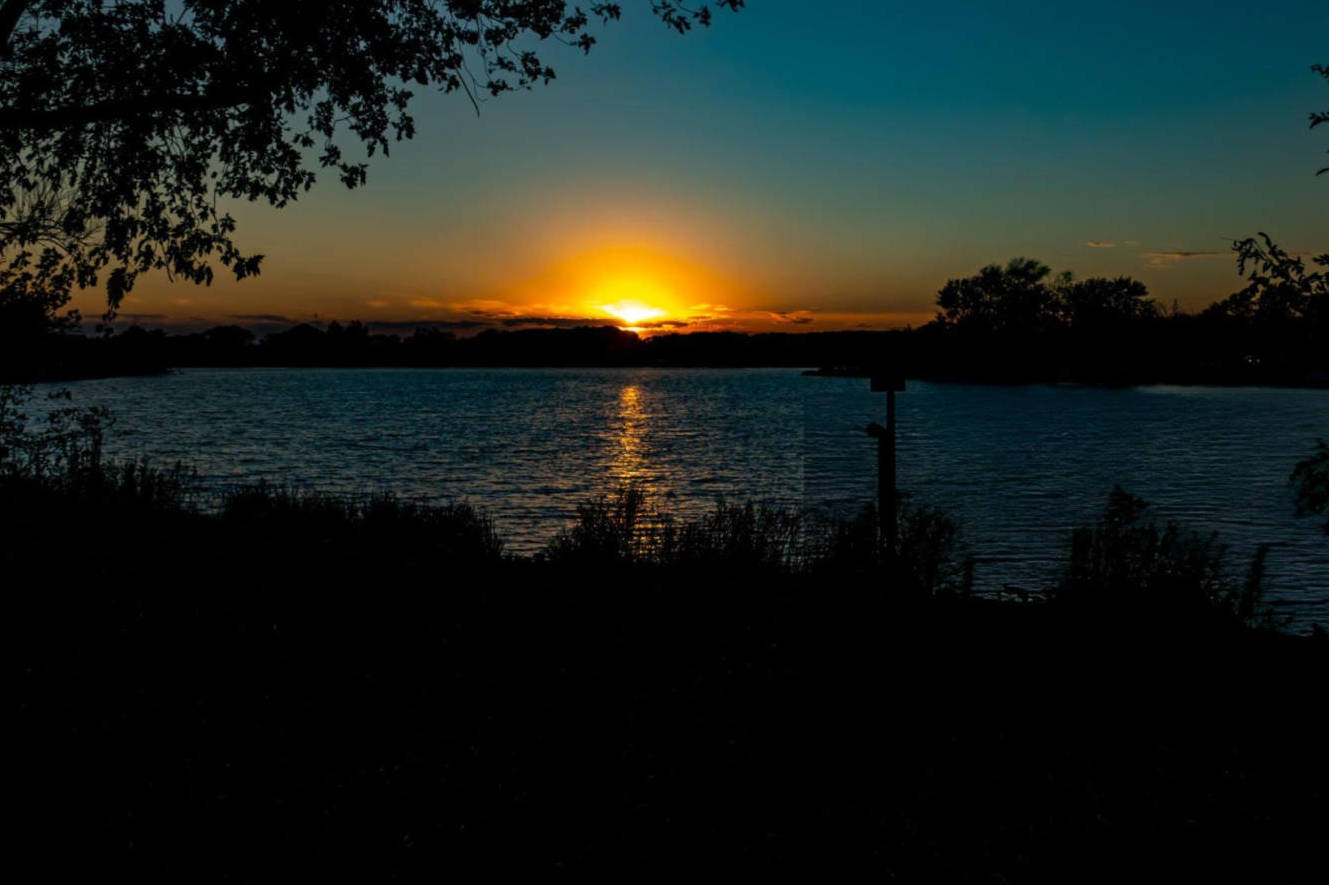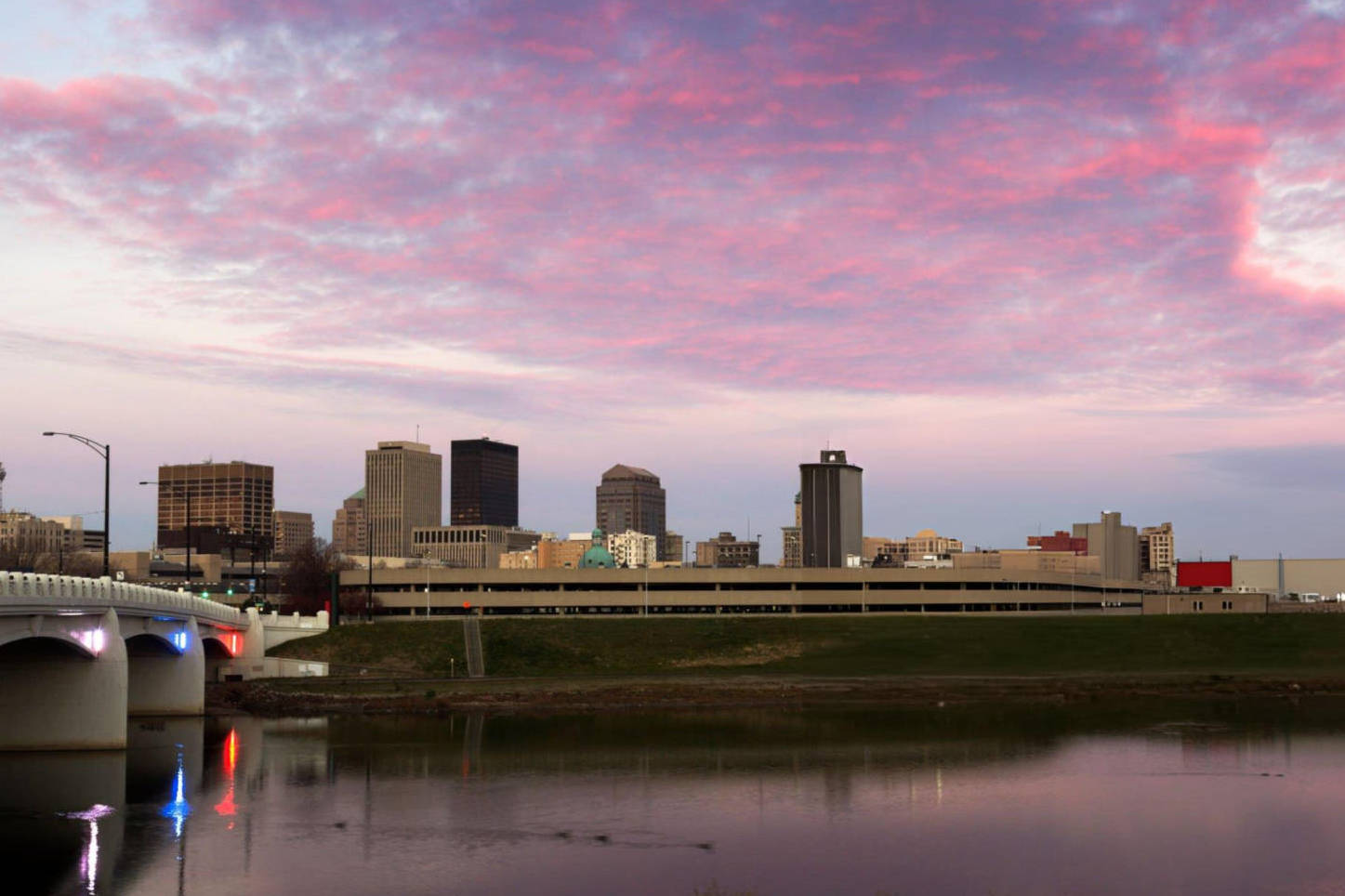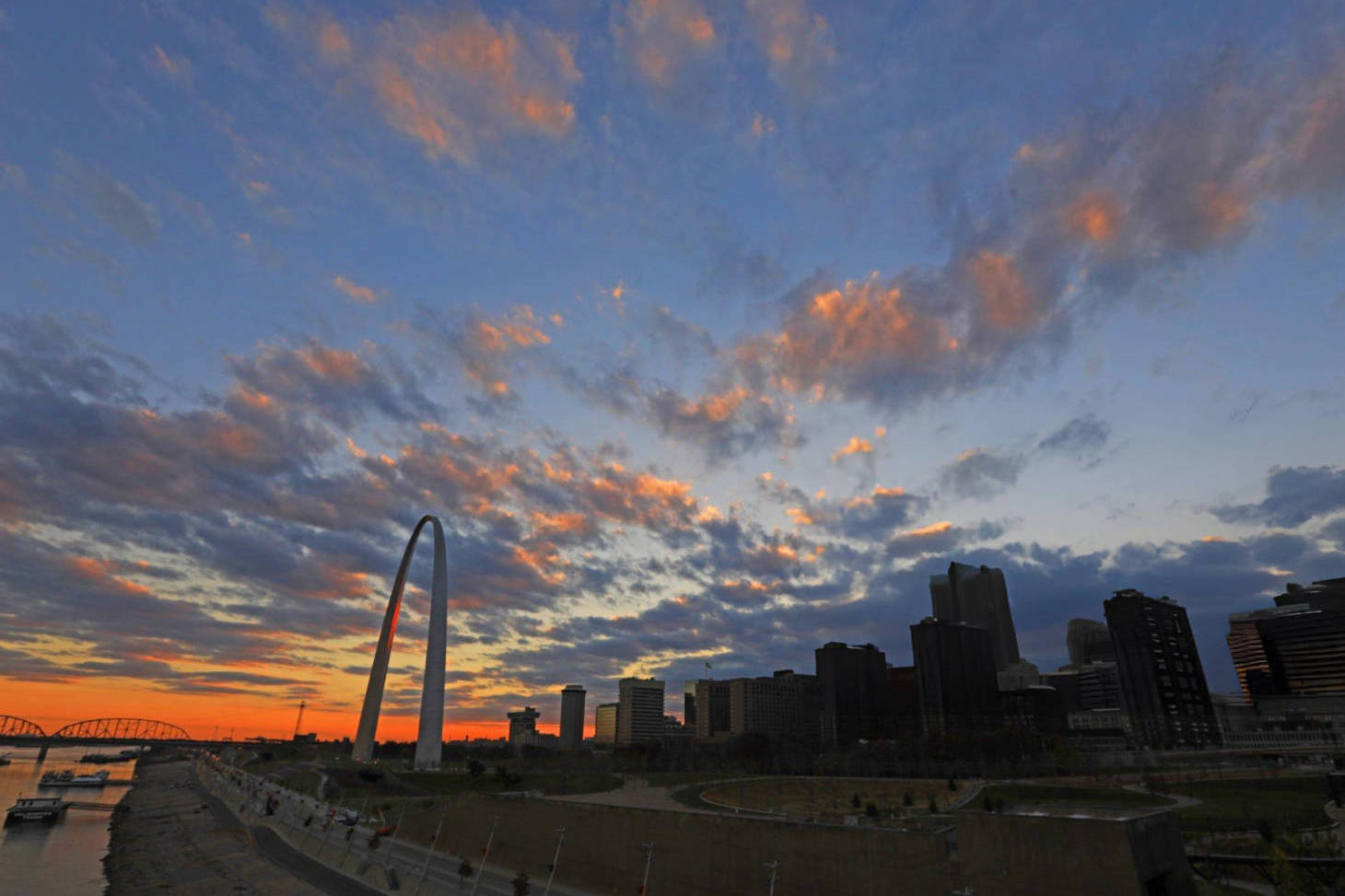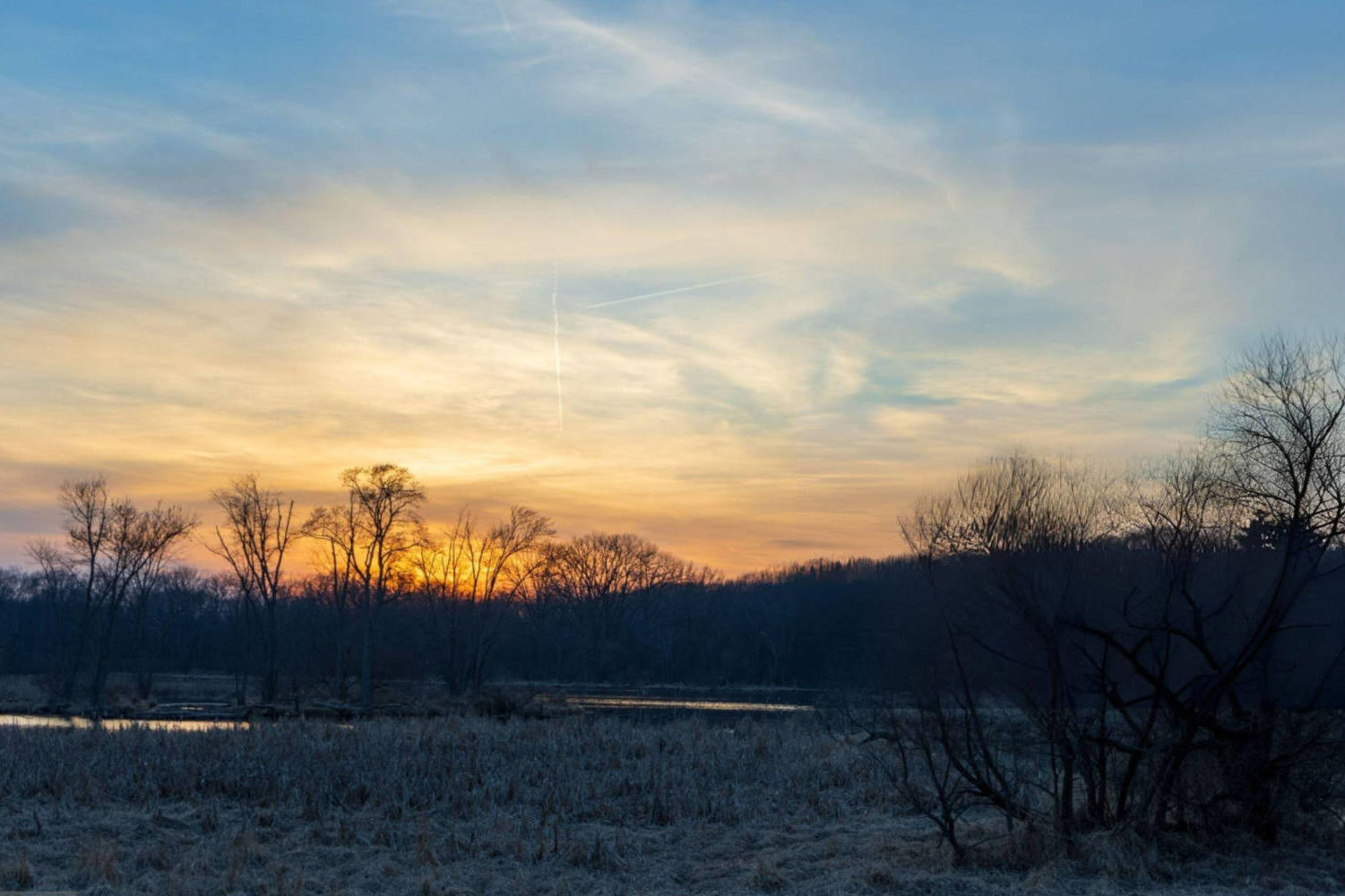Introduction
Home to the city of Chicago, the city of brotherly love, Illinois is a state with a notably less celebrated history – namely the massive amount of sundown towns in Illinois.
Less known than Al Capone and the Chicago Bears: sundown towns—areas where discriminatory practices once barred people of color after dark. They were alarmingly common throughout Illinois (including some places near Chicago) and the Midwest at large.
For Black travelers, the knowledge and legacy of sundown towns adds a layer of unease to any plans to explore or pass through Illinois
Our List of Sundown Towns In Illinois
Towns across the state of Illinois upheld rules that dehumanized Black and non-white communities, taking the form of outright discriminatory practices including (but not limited to):
- Barring non-white residents from buying, owning, or renting property
- Prohibiting non-white business workers from working past sunset
- Forcing Blacks from traveling through town
From Anna to Cicero, Deerfield to Pekin, the list of sundown towns in Illinois is long!
Though you may hear time and time again that things have changed, these towns carry a legacy that can still influence perceptions and experiences. Understanding this past is important, especially when the towns in question still wrestle with their reputation and history.
One of the most well-know sundown towns in Illionois: Anna
Let’s start with one of the most infamous sundown towns in Illinois: Anna, Illinois – aka “Ain’t No Nrs Allowed.”
Anna is the principal town of Union County and serves as a regional retail hub in Southern Illinois. As of the 2020 Census, the population stands at 4,303, predominantly white (95%).
The town’s troubling past began to cement itself in 1909 when residents attempted to expel Black families following the lynching of William “Froggie” James in nearby Cairo. This was in response to the alleged crimes against an Anna local, which triggered a violent reaction against the Black community.
This incident epitomized the town’s sundown status, where signs explicitly warned Black individuals against remaining in town after dark.
Despite the town’s official name honoring Anna Davie, the wife of its founder, its acronym became a symbol of its exclusionary practices.
This legacy has been captured in both literature and film. Furthrmore, despite the changes over the years, Anna’s past still looms large. Its past still influences its demographic makeup and cultural perception well into the present.
One resident even said this: “Ners aren’t allowed in Anna. If one is seen, they’re told to not let the sun set on their black heads. If you want n**ers, go to Carbondale.”
Signs that marred its roadsides into the 1970s have disappeared. However, according to some residents (as of 2010), the town still excludes and refuses to serve Black people.
Benton, Illinois

Benton, Illinois serves as the county seat of Franklin County. It is a small city with a population of 6,709 according to the 2020 census. Mostly white, the city reflects a racial makeup of 93% White and 0.5% Black.
In April 1995, Benton was the site of a Ku Klux Klan rally held outside the Franklin County Courthouse attracting about 400 people, but not all of whom supported the KKK’s views.
The rally saw KKK members delivering hate-filled speeches against various groups, including Jews, Blacks, gays, liberal politicians, and reporters. The event was heavily policed, with around 40 officers in riot gear to maintain order.
Fast forward 25 years to June 2020, Benton witnessed a shift in its social climate with a Black Lives Matter protest at the same courthouse – very different from the 1995 gathering.
This protest (prompted by the murder of George Floyd) saw about 60 people advocating for racial justice and equality. Interestingly, this demonstration occurred as the courthouse was being prepped for demolition. One could say that this symbolizes a physical and metaphorical dismantling of the old order (or something to that effect).
But while the town is slowly changing for the better, the lack of Black residents is still very noticeable.
Calhoun County, Illinois

Calhoun County is one of the state’s least populated counties with a mere 4,437 residents as of the 2020 census. This farming region was effectively a sundown county as recently as the mid-20th century.
The 1940 census recorded 8,207 white residents with zero people of color listed. This did not happen by chance. It was the product of deliberate social engineering by local residents that wanted to ensure that Blacks were excluded from settling in the area.
A resident’s reflection from the era encapsulates the sentiment: Calhoun County was an “earthly paradise for those who hate Negro Americans“. This was similar the racial attitudes of East Alton but on a much larger scale. The reflection also challenges the notion of ‘self-determination’ used to justify racial exclusion.
One of the sundown towns in Illinois that has made the most progress: Cicero

Cicero, a suburb of Chicago in Cook County, has a population of 85,268 as of 2020 and is the 11th most populous municipality in the state. The demographic shift in Cicero is now 89% Hispanics or Latinos! It now has only 19% identifying as White and 4% as Black— a very different demo from its past when it was still a sundown town in Illinois.
Cicero’s tumultuous history includes a race riot on July 11-12, 1951. It began when a mob of about 4,000 white residents attacked a Black family that had moved into an all-white neighborhood. It actually lead to the Illinois National Guard being called in by Governor Adlai E. Stevenson. The violent incident received global condemnation.
In the mid-1960s, Cicero became a focal point in the civil rights movement, although plans for marches were often reconsidered due to fears of violence. In 66’ counter-protestors even physically assaulted MLK.
Hoever, a significant march did occur, helping to galvanize support for the Civil Rights Act of 1968, which aimed to eliminate discrimination in housing.
Random fact about the town: After establishing his criminal empire in Chicago, infamousmobster Al Capone relocated to Cicero to evade Chicago police.
One of the smallest Sundown Towns in Illinois: De Land
De Land is a small village in Piatt County with a population of just 447 people according to the 2020 census, overwhelmingly white at 98.4%.
And yes, despite its small size, De Land was a sundown town in Illinois.
In 2002, the De Land board of trustees openly recognized that the village once enforced a sundown ordinance that explicitly barred African Americans from residing there after dark.
In 2002, a resident shared a 1960s childhood memory of overhearing adults discuss how a Black family’s house in De Land mysteriously caught fire shortly after they moved in. The insinuation from the adults was clear: given De Land’s sundown rule, such an incident was almost to be expected.
Sundown Towns in Illionois Deerfield (0.71% Black Population)

Deerfield, Illinois, a northern suburb of Chicago located about 28 miles north. It is known for its affluent neighborhoods and beautiful setting on the North Shore. It represents one of the wealthiest legacy sundown towns in Illinois
As of the 2020 census, the village’s population was 19,196, with 88% identifying as White and only 0.71% as Black.
The town was even listed 3rd in the top 50 best places to raise children. Despite this, the town has had a history of issues with racial integration.
In 1959, Deerfield became a battleground over racial equality. It was triggered when local officials issued a stop-work order to halt the construction of a new housing development after learning it would be open to African Americans. The ensuing debate over integration—which touched on property values and the integrity of community leaders and developers—had earned Deerfield the moniker “the Little Rock of the North.”
Supporters of integration faced severe backlash and were ostracized by many in the community.
In a move that quashed the possibility of integration at that time, the village chose to build parks on the contested land, with the properties developed into what are now Mitchell Pool and Jaycee Park – effectively ending the housing development. Two partially completed model homes were sold off to village officials.
The Deerfield Park District Board decided on June 18, 2020 to rename James Mitchell Park to Floral Park, the original name intended for the thwarted subdivision (both simultaneously acknowledging and moving past its segregationist legacy).
At least there’s that.
Eldorado, Illinois
Eldorado, Illinois, in Saline County, has 4,122 residents (2010 census), with 97.3% White and 0.8% African American. Like many other small towns in the area, this tiny town had a history of racial hostility and exclusion.
A 1923 article from the Daily Register reported that three homes of Black residents were dynamited.
Further back, in 1902, an incident was documented in The New York Times involving the Reverend Peter Green, the pastor of the African Methodist Church in Eldorado. He faced a threatening mob and was told to leave the city within 24 hours or face death. Defiantly, Rev. Green stood his ground with a shotgun, ready to defend himself and his home.
Decades later, in 1992, a local resident recounted an incident where police advised his Black guests to leave town during a party, despite there being no disturbance.
Although many residents recall a sundown sign in Eldorado, there is some debate about when it was removed. Most agree it was likely taken down sometime in the 1960s.
Granite City, Illinois
Granite City, reresents one of the many sundown towns in Illinois. Its population is 27,549 with 92% White and 7% Black, according to the 2020 census.
Dating back to around 1903, Granite City took drastic measures by expelling its Black residents.
In 1967, this past was brought into the spotlight again. The Congress of Racial Equality accused the city of still operating as a sundown town in Illinois. At that time, Mayor Donald Partney admitted that Granite City was widely regarded as having a sundown ordinance, though he contested that it was not an “official policy.”
As if that made a difference.
Kenilworth, Illinois
Kenilworth is a village with 2,514 residents as of the 2020 census, 89% White and 0.40% Black.
This town was fFounded by Joseph Sears with explicit racial exclusions. Kenilworth was designed with “large lots, high standards of construction, no alleys, and sales to Caucasians only.” This policy also initially barred Jews and all non-whites, except as live-in servants.
The community’s racial climate was tested in 1966 when the Calhouns, the first African American family in Kenilworth, faced severe hostility, including cross burning and vandalism.
Despite these acts, there were also segments of the community that supported the Calhouns. Four years after the initial hostility, two teenagers responsible for the cross burning approached Harold Calhoun to apologize for their actions.
Sundown Towns in Illinois: Naperville (A Black Student that lived their reached out)
Naperville, Illinois, straddling DuPage and Will counties, is the state’s fourth-most populous city. It has 149,540 residents as of the 2020 census (62% White, 22% Asian, 5% Black). Naperville is one of many sundown towns in Illionois.
Founded in 1831 along the DuPage River by Joseph Naper, the city originally flourished as Naper’s Settlement. Then after some time it significantly grew its population because of Chicago’s urban sprawl.
Historically, Naperville’s history shows us that it too has racial past:
- 1938 Incident: William Pickens, an NAACP official, defied local norms by staying overnight, an exception in this then all-white town.
- 1966 Housing Discrimination: Two Black scientists, despite holding Ph.D.s, faced housing discrimination as real estate agents restricted their options to distant “Negro neighborhoods.”
- Church Incident: A local church featuring a stained-glass window of an African American man was burned down due to racial intolerance. Rebuilt in the 1920s, the window and its imagery were restored.
By the 1990s, Naperville had shed its sundown status, although this change may have begun only as late as the 1970s. Despite evolving, the city’s historical image as an all-white community lingered as a dubious “selling point” among some realtors.
Interestingly, a high school student from Naperville reached out to discuss the impact sundown towns have on a community. This student, recognizing their own town’s past as a sundown town, sought to learn about how its legacy continues to shape the community.
After our wonderful discussion, our takeaway is that young residents are becoming more aware of the lasting impact of historical exclusionary practices. While it will never erase what happened, it’s the first step to understanding and addressing these past injustices to create a more inclusive future.
Sundown Towns in Illinois: Pekin’s long history
Pekin, Illinois, is located on the Illinois River and is the largest city of Tazewell County with a population of 31,731 (92% White, 3% Black).
Pekins has a well-documented and complex history intertwined with slavery, abolitionism, and racial tensions.
Pre-Civil War Era
Nance Costley, a freed former slave with assistance from Abraham Lincoln, was auctioned to a local resident in 1827, marking Pekin’s early engagement with slavery issues. Lincoln successfully argued her freedom case in 1841, emphasizing legal principles of liberty regardless of color.
Her freedom was legally secured, and she remained in Pekin with her husband and children. For the next half century, she would be known to the town as “Black Nancy.”
Nance was included as a notable citizen for the town in 1870 and was said to have “outlived the age of barbarism, and now, in her still vigorous old age, she sees her race disenthralled; the chains that bound them forever broken, their equality before the law everywhere recognized and her children enjoying the elective franchise” by William H. Bates.
Pro-Slavery Sentiment
Despite Illinois being a free state, Pekin harbored strong pro-slavery sentiment, influenced by slave-owning settlers from the South. This contrasted with local abolitionist activities, by Dr. Daniel Cheever and other residents who supported the Underground Railroad.
Civil War Divisions
The city was divided during the Civil War, with the “Knights of the Golden Circle” promoting secession. In response, local abolitionists formed a chapter of the Union League of America in 1862 to encourage loyalty to the Union and oppose slavery.
Ku Klux Klan Influence
The 1920s saw a resurgence of the KKK in Pekin, culminating in a massive rally (known as one of the largest “monster rallies” ever held) in 1924. They had between 25 to 45 THOUSAND people in attendance.
Simultaneously, the Klan also managed to get brief control over the local newspaper between September 1923 to June 1925 to promote their Klan ideologies. With declining membership, they ended up selling the paper after only a few years.
Civil Rights Era
Identified as a sundown town in Illinois, Pekin was known for its hostile environment towards Blacks. However, some local church leaders and former Pekin’s resident U.S. Senator Everett Dirksen played roles in the civil rights movement, contributing to the passage of the Civil Rights Act of 1964.
Additional Sundown Towns in Illinois
Think that’s it? Unfortunately, you’d be wrong.
Illinois has a deeply rooted history of sundown towns. Here are some suspected and confirmed sundown towns in Illionois that were not included in this article. Just so you know, it is A LOT:
Addison, Albers, Albion, Altamont, Alto Pass, Anna, Arcola, Arenzville, Arlington Heights, Arthur, Ashland, Ashley, Assumption, Athens, Atwood, Auburn, Ava, Aviston, Balcom, Barrington, Bartelso, Bartlett, Bartonville, Beardstown, Beaucoup, Beckemeyer, Beecher, Belknap, Bellwood, Bensenville, Benton, Berryville, Berwyn, Bethany, Bloomingdale, Blue Mound, Bluford, Bolingbrook, Bradley, Braidwood, Breese, Bridgeport, Brookfield, Brooklyn, Brown County, Brownstown, Buckley, Buckner, Buffalo, Bunker Hill, Bureau, Burr Ridge, Cairo, Calhoun, Calhoun County, Campbell Hill, Cantrall, Carlinville, Carlyle, Carmi, Carterville, Carthage, Cary, Casey, Catlin, Cave-in-Rock, Cherry, Chester, Chicago, Chillicothe, Christopher, Cicero, Clarendon Hills, Clinton County, Cloverdale, Coal City, Cobden, Colchester, Columbia, Crainville, Crete, Creve Coeur, Crossville, Crystal Lake, Cuba, Danvers, Darien, Dawson, De Land, Deerfield, DeKalb, DeLand, Des Plaines, Divernon, Dongola, Downers Grove, DuPage County, Dupo, Dwight, Earlville, East Alton, Effingham, El Paso, Elco, Eldorado, Elk Grove Village, Elmhurst, Elmwood, Elmwood Park, Elsah, Enfield, Eola, Equality, Evansville, Evergreen Park, Fairfield, Farmer City, Fisher, Flora, Flowerfield, Forest Park, Fox Valley, Franklin Park, Freeburg, Fulton, Germantown, Gillespie, Girard, Glen Carbon, Glen Ellyn, Glendale Heights, Golconda, Goreville, Granite City, Grant Park, Grayville, Greenfield, Greenup, Greenview, Hardin, Harvard, Havana, Hazel Dell, Henry, Herrin, Herscher, Highland, Highland Park, Hinsdale, Homer, Hoyleton, Irvington, Itasca, Iuka, Ivesdale, Jasper County, Jewett, Johnston City, Jonesboro, Justice, Kane County, Kaolin, Karnak, Keeneyville, Kenilworth, Kenney, Kinmundy, La Moille, Lacon, Lamb, LaSalle Peru, Lawrenceville, Le Roy, Leland Grove, Lemont, Lewistown, Lexington, Libertyville, Lisle, Lombard, Lovington, Lyons, Madison, Mahomet, Manhattan, Mansfield, Manteno, Marissa, Maroa, Marquette Heights, Marseilles, Marshall, Martinsville, Maryville, Mascoutah, Mazon, McClure, McHenry County, McLeansboro, Medinah, Melrose Park, Meredosia, Metamora, Minonk, Monroe County, Monticello, Montrose, Morris, Morrison, Morton, Mounds city, Mount Olive, Mount Prospect, Moweaqua, Mt. Carmel, Mt. Sterling, Mt. Zion, Mulkeytown, Mundelein, Nashville, Neoga, New Baden, New Boston, New Lenox, New Minden, Newman, Niantic, Niles, Nokomis, Norris City, O’Fallon, Oak Brook, Oak Lawn, Oak Park, Oakawville, Oakbrook Terrace, Oakland, Oblong, Okawville, Olney, Omaha, Onarga, Oreana, Orient, Orland Park, Palestine, Pana, Panama, Park Ridge, Patoka, Pawnee, Paxton, Pekin, Pembroke, Peotone, Philo, Piatt County, Pierron, Pinckneyville, Pittsfield, Plainfield, Pocahontas, Posey, Potomac, Princeton, Pulaski County, Ramsey, Rantoul, Red Bud, Richview, Ridge Farm, Ridgway, Riverside, Roanoke, Robinson, Rochester, Romeoville, Roselle, Roseville, Rosiclare, Roxana, Royalton, Salem, San Jose, Sandoval, Sandwich, Saybrook, Schaumburg, Sesser, Shelbyville, Sherman, Sidell, Sidney, South Pekin, Spaulding, St. Anne, St. Elmo, St. Jacob, St. Joseph, St. Rose, Staunton, Steeleville, Stronghurst, Sullivan, Tamaroa, Tamms, Teutopolis, Thayer, Thebes, Toledo, Tolono, Toluca, Towanda, Trenton, Tuscola, Union County, Valier, Vandalia, Vergennes, Vienna, Villa Grove, Villa Park, Virden, Warrensburg, Warrenville, Warsaw, Washington, Waterloo, Wayne, Wayne City, West Chicago, West City, West Frankfort, West Salem, Western Springs, Westfield, Westmont, Weston, Westville, Wheaton, White Hall, White Heath, Williamsville, Willowbrook, Wilmette, Windsor, Winfield, Winnebago, Winthrop Harbor, Witt, Wolf Lake, Wolflake, Wood Dale, Wood River, Woodridge, Worden, Wyanet, Zeigler.
What now?
If you are an African American, and live in Illinois, we woud love it if you would contribute your experience, be it good or bad to our Black Travel Review Platform
Want to Learn More about Sundown Towns in the USA?
Sources
- https://justice.tougaloo.edu/location/illinois/
- https://justice.tougaloo.edu/sundowntown/anna-il/
- https://www.washingtonpost.com/wp-dyn/content/article/2005/10/20/AR2005102001715.html
- https://www.waymarking.com/waymarks/WM68ZW_1951_Race_Riots_Then_Now_Cicero_IL
- https://time.com/5096937/martin-luther-king-jr-picture-chicago/
- https://books.google.com/books?id=abhIDwAAQBAJ&pg=PT81#v=onepage&q&f=false
- https://web.archive.org/web/20100126021058/http://images.businessweek.com/ss/07/11/1116_bestplaces_kids/source/49.htm
- https://patch.com/illinois/deerfield/park-board-votes-rename-mitchell-park
- https://historynewsnetwork.org/article/avoiding-history-at-the-national-trust
- https://www.jstor.org/stable/40204738
- https://archive.org/details/knightsofgoldenc00bate
- https://www.jstor.org/stable/40191608
- https://www.pekintimes.com/story/entertainment/local/2013/06/22/pekin-wasn-8217-t-always/45316102007/

